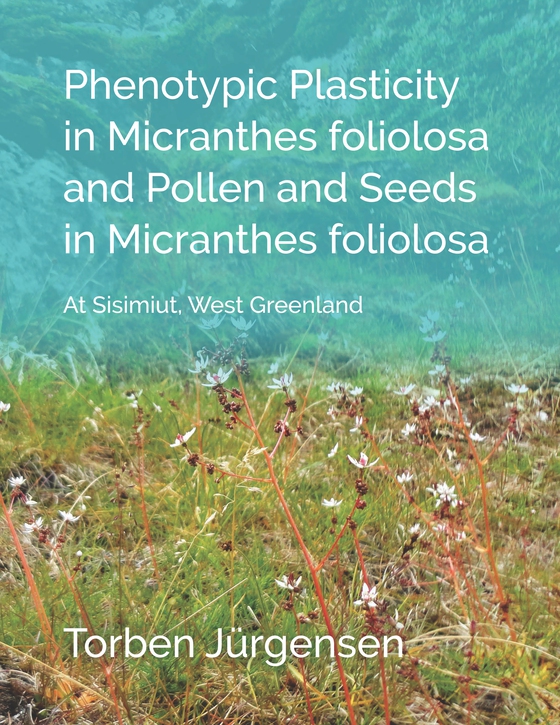
Phenotypic Plasticity in Micranthes foliolosa and Pollen and Seeds in Micranthes foliolosa e-bog
98,74 DKK
(ekskl. moms 78,99 DKK)
Micranthes foliolosa (R. Br.) Gornall sensu lato is exciting in Sisimiut area, West Greenland. The genotype of Micranthes foliolosa develops six phenotypes, all dependent on the substrate temperature. Thus, Micranthes foliolosa can be used as a climate indicator. It has been found that cold phenotypes without flowers very rarely occurs together with warm phenotypes with many flowers.
Cold ...
E-bog
98,74 DKK
Undertitel
At Sisimiut, West Greenland
Forlag
Books on Demand
Udgivet
9 juni 2020
Længde
44 sider
Genrer
Botany and plant sciences
Sprog
English
Format
epub
Beskyttelse
Vandmærket
ISBN
9788743018124
Micranthes foliolosa (R. Br.) Gornall sensu lato is exciting in Sisimiut area, West Greenland. The genotype of Micranthes foliolosa develops six phenotypes, all dependent on the substrate temperature. Thus, Micranthes foliolosa can be used as a climate indicator. It has been found that cold phenotypes without flowers very rarely occurs together with warm phenotypes with many flowers.
Cold phenotypes reproduce them exclusively by bulbils (asexual reproduction) while warm phenotypes have both asexual and sexual reproduction with insect pollination. The insects do not search for nectar glands but only for the red tip of the anthers, which the insect rips off. The insects tend to seek out specimens with triple capsules for a fourteen-day period around August 1st. Around September 1st, the capsules open and throw seeds. Micranthes foliolosa growth indicate a possible control of the plant by red staining (anthocyanin pigmentation). In this study Micranthes redofskyi may prove to be a Beringian variant of Micranthes foliolosa s.l., as Micranthes foliolosa var. sisimiutii is an Atlantic variant of the species.
 Dansk
Dansk

